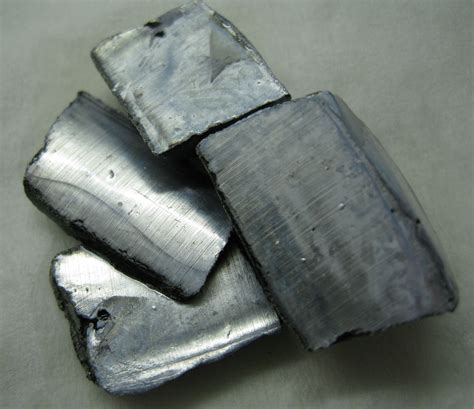Is Potassium A Metal Or Nonmetal
Juapaving
Apr 01, 2025 · 4 min read

Table of Contents
Is Potassium a Metal or Nonmetal? A Deep Dive into Alkali Metals
Potassium, a crucial element for life, is often found in bananas and other fruits, but its classification as a metal or nonmetal is a fundamental question in chemistry. This comprehensive guide delves deep into the properties of potassium, definitively answering this question and exploring its unique characteristics within the broader context of the periodic table.
Understanding the Metal vs. Nonmetal Dichotomy
Before classifying potassium, it's vital to understand the fundamental differences between metals and nonmetals. These distinctions are based on several key properties:
Physical Properties:
- Metals: Generally shiny, solid at room temperature (except mercury), good conductors of heat and electricity, malleable (can be hammered into sheets), ductile (can be drawn into wires), and possess high density.
- Nonmetals: Often dull in appearance, can exist as solids, liquids, or gases at room temperature, poor conductors of heat and electricity, brittle (easily shattered), and typically have low density.
Chemical Properties:
- Metals: Tend to lose electrons easily, forming positive ions (cations). They are generally reactive, particularly with nonmetals.
- Nonmetals: Tend to gain electrons easily, forming negative ions (anions). Their reactivity varies greatly.
Potassium: A Definitive Classification
Based on the above criteria, potassium is unequivocally a metal. Let's examine its properties to support this conclusion:
Potassium's Metallic Properties:
- Physical State: At room temperature, potassium is a soft, silvery-white solid. Its softness is a distinguishing characteristic of alkali metals, making it easily cut with a knife.
- Electrical Conductivity: Potassium is an excellent conductor of electricity. This property is a hallmark of metals and is directly related to the ease with which electrons can move through the material. This high conductivity makes it useful in specific electrical applications, though its reactivity limits widespread use.
- Thermal Conductivity: Potassium also demonstrates high thermal conductivity, meaning it efficiently transfers heat. This is another characteristic common to most metals.
- Malleability and Ductility: While not as malleable or ductile as some other metals like gold or copper, potassium still exhibits these properties to some extent. It can be hammered into sheets and drawn into wires, albeit with caution due to its reactivity.
- Density: Potassium possesses a relatively low density compared to many other metals, but it is still significantly higher than nonmetals.
Chemical Properties Reinforcing its Metallic Nature:
- Ionization Energy: Potassium has a low ionization energy, meaning it readily loses its outermost electron to form a +1 ion (K⁺). This tendency to lose electrons is a defining characteristic of metals.
- Electronegativity: Potassium has a low electronegativity, indicating its weak attraction for electrons. This further supports its tendency to lose electrons rather than gain them, a key feature of metals.
- Reactivity: Potassium is highly reactive, especially with water and oxygen. This reactivity is a common trait among alkali metals and stems from their eagerness to lose electrons and form stable ionic compounds. The vigorous reaction of potassium with water is a striking demonstration of its metallic nature.
Potassium's Position in the Periodic Table
Potassium's location in the periodic table further solidifies its classification as a metal. It belongs to Group 1, also known as the alkali metals. All elements in this group are characterized by their metallic properties and their high reactivity.
The alkali metals share similar electronic configurations, with one electron in their outermost shell. This single valence electron is easily lost, leading to the formation of +1 ions and contributing to their high reactivity. This shared electronic structure and resultant chemical behavior further reinforces the classification of potassium as a metal.
Practical Applications Highlighting Potassium's Metallic Nature
While the reactivity of potassium limits its direct use in many common applications, its metallic properties find utility in niche areas. For example:
- Alloying: Potassium can be used in specific alloys to modify their properties, although its reactivity presents challenges in processing and handling.
- Photoelectric Cells: Potassium's low work function (the minimum energy required to remove an electron) makes it useful in photoelectric cells, which convert light into electricity.
- Scientific Research: Potassium's unique properties, particularly its reactivity, make it valuable in various scientific research settings, including studies in electrochemistry and materials science.
Debunking Misconceptions
There might be a misconception that because potassium is essential for biological functions, it somehow defies the conventional classification of metals. However, the biological role of potassium is linked to its ionic form (K⁺), which is derived from its metallic nature and readily loses its electron. The ion's role in cellular processes is not contradictory to its metallic properties; instead, it's a direct consequence of them.
Conclusion: Potassium is Undeniably a Metal
In conclusion, based on its physical and chemical properties, its location in the periodic table, and its behavior in various contexts, potassium is undeniably a metal. Its metallic properties are fundamental to its reactivity and its role in both natural and industrial processes. While its reactivity necessitates careful handling, its unique characteristics contribute significantly to its importance in various scientific and industrial applications. Understanding potassium's metallic nature is crucial for appreciating its contributions to chemistry, biology, and various technological advancements.
Latest Posts
Latest Posts
-
How Many Cubic Inches In A Foot
Apr 02, 2025
-
What Is The Solution Of This Linear System
Apr 02, 2025
-
How Many Furlongs Is A Mile
Apr 02, 2025
-
How Many Cm In 23 Inches
Apr 02, 2025
-
In What Organelle Does Cellular Respiration Take Place
Apr 02, 2025
Related Post
Thank you for visiting our website which covers about Is Potassium A Metal Or Nonmetal . We hope the information provided has been useful to you. Feel free to contact us if you have any questions or need further assistance. See you next time and don't miss to bookmark.
